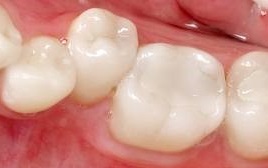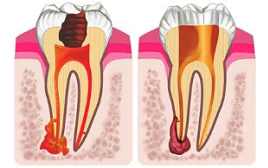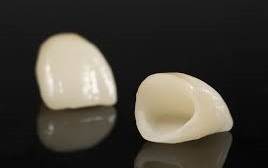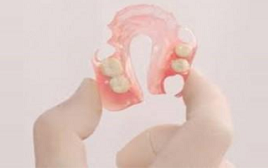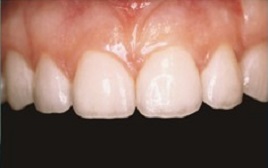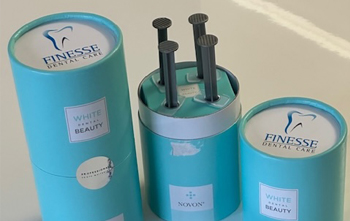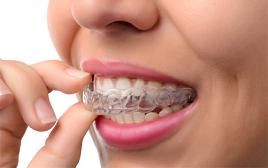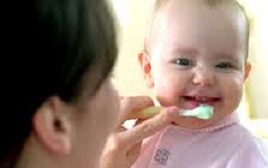Preventive Treatment
Preventive dentistry is the modern way of helping you keep a healthy mouth. It helps you to keep your teeth which means you need to have less dental treatment. The two main causes of tooth loss are decay and gum disease. The better you prevent or deal with these two problems, the more chance you will have of keeping your teeth for life. For people with their own teeth this can help to prevent the need for treatment - especially fillings and extractions. We will recommend a course of treatment to get your mouth into good condition, and then work out a ‘maintenance plan' to help you keep it that way.
For people who don't have any teeth regular visits to the dentist will benefit because conditions such as mouth cancer and denture stomatitis can be spotted and then treated. Also new set of dentures can be made if the existing ones are worn down and not fitting very well.
At your preventive treatment appointment
1. We will first check your teeth and gums, and talk to you about any treatment you need. The main aim is to help you get your mouth really healthy. In a healthy mouth it is unlikely that decay or gum disease will continue to be a problem.
2. We will thoroughly remove all plaque and tartar from your teeth. This is often called a ‘scale and polish'.
3. We will show you the best ways to brush, and how to clean in between your teeth using interdental brushes or floss, to remove the bacterial ‘plaque' which forms constantly on your teeth. When you eat or drink something sugary, the bacteria in the plaque turn the sugar into acid, which may cause tooth decay. Plaque can also cause gum inflammation (swelling and soreness) if it is not regularly and thoroughly removed. The hard tartar (or ‘calculus') which builds up on the teeth also starts off as plaque.
4. You will be told which oral care products are the best ones for you to use.
5. We will talk to you about your diet, and any habits you have such as smoking and drinking lots of alcohol, fizzy juice, sugary drinks and consuming sugary snacks.
6. We will also make sure that all your fillings are in good condition and that there are no rough edges or leaky margins that will make cleaning difficult.
7. Regular X rays/radiographs will be taken based on decay and gum disease risk to check for decay and bone levels.
- X-rays help us to see in between your teeth or under the edge of your fillings. They can show whether you have an infection in the root of your tooth and how severe the infection is. Finding and treating dental problems at an early stage can save both time and money.
- In children, x-rays can be used to show where the adult teeth are and when they will appear. They are also used in the same way for adults when the wisdom teeth start to come through.
- X-rays are an essential part of your health records. If you are a new patient, unless you have had dental x-rays very recently, we will probably suggest having x-rays. This helps us assess the condition of your mouth and to check for any hidden problems. After that, x-rays may be recommended every 6 to 24 months depending on the person, their history of decay, their age and the condition of their mouth.
- At Finesse Dental Care we use digital xray equipment which ensures the amount of radiation received from a dental x-ray is extremely small.
- Your radiation exposure is reduced by 75 – 80% as compared to conventional film techniques.
- The digital images are available to view instantaneously on the computer monitor screen. These images are easy to enhance, enlarge or refine to detect dental decay/caries and for your education. Brightness, colour and or contrast of digital x rays can be adjusted without having to expose you again for another radiation.
- You should always tell us if you are pregnant. We will take extra care and will probably not use x-rays unless we really have to, especially during the first three months.
Our top preventive tips to keep your teeth and gums healthy are:
Brush your teeth last thing at night and at least one other time during the day, with fluoride toothpaste. Spit out after brushing and do not rinse, so that the fluoride stays on your teeth longer. Use a toothbrush with a small- to medium-sized head and soft to medium filaments (bristles). Remember to replace the toothbrush every 3-4 months as worn down brushes are not effective.
- Clean in between your teeth with ‘interdental' brushes and floss - brushing alone only cleans up to about 60 percent of the surface of your teeth.
- Rinse your mouth after eating snacks with high sugar.
- Keep consumption of sugary snacks, fizzy drinks, fruit juice, sugary sports and energy drinks, alcohol to minimum.
- Keep up with your regular check up and hygiene appointments.






